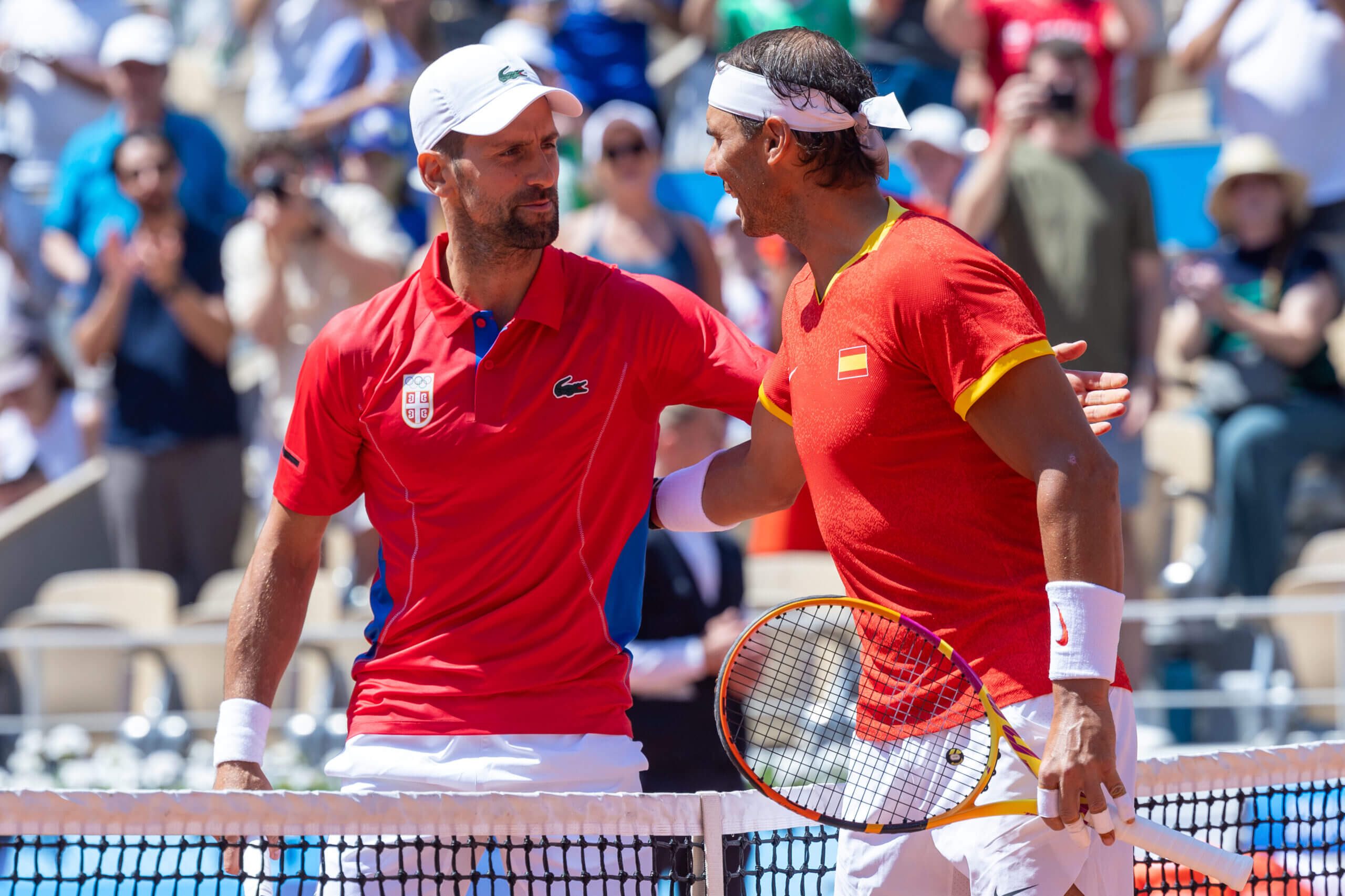
Follow live coverage of day 3 at the 2024 Paris Olympics
PARIS — Novak Djokovic dispatched Rafael Nadal 6-1, 6-4 in the second round of the 2024 Paris Olympic’s men’s singles at Roland Garros on Monday.
In the 60th meeting between two of the greatest tennis players of all time, who share 46 Grand Slam titles, Djokovic showed Nadal no mercy, in the biggest test of the Spaniard’s level since 2022, when he won the French Open on this very court, beating Djokovic in the quarterfinal.
Despite a stunning run of four games in the second set in which Nadal showed flashes of his old self — and exploited the scar tissue he has inflicted on Djokovic over the years — the Serbian recovered to see out the second set.
It takes Djokovic’s head-to-head against Nadal to 31-29, and extends his quest for an Olympic gold medal, the one major honour in tennis that still eludes him.
The Athletic’s writers, Charlie Eccleshare and Matt Futterman, analyze the match and what it means.
How did Djokovic use the drop shot to show no mercy?
For pretty much everyone watching this formerly great rivalry suddenly turn into a mismatch, it was hard not to feel sympathy for Nadal.
That was not the case for Djokovic, and with good reason. Not only does he have an Olympic gold medal to win, but he has suffered more heartbreak on this court at the hands of Nadal than most, losing to him eight times.
Djokovic probably could have beaten Nadal however he’d played, with the Spaniard unable to rev up to the level required when facing the Wimbledon finalist, but Djokovic made sure to exploit the 14-time Roland Garros champion’s most glaring weaknesses on occasion after occasion. Djokovic ruthlessly took advantage of Nadal’s movement with a string of devastatingly effective drop shots, and while Nadal chased a couple down, there were plenty more where he was nowhere near.
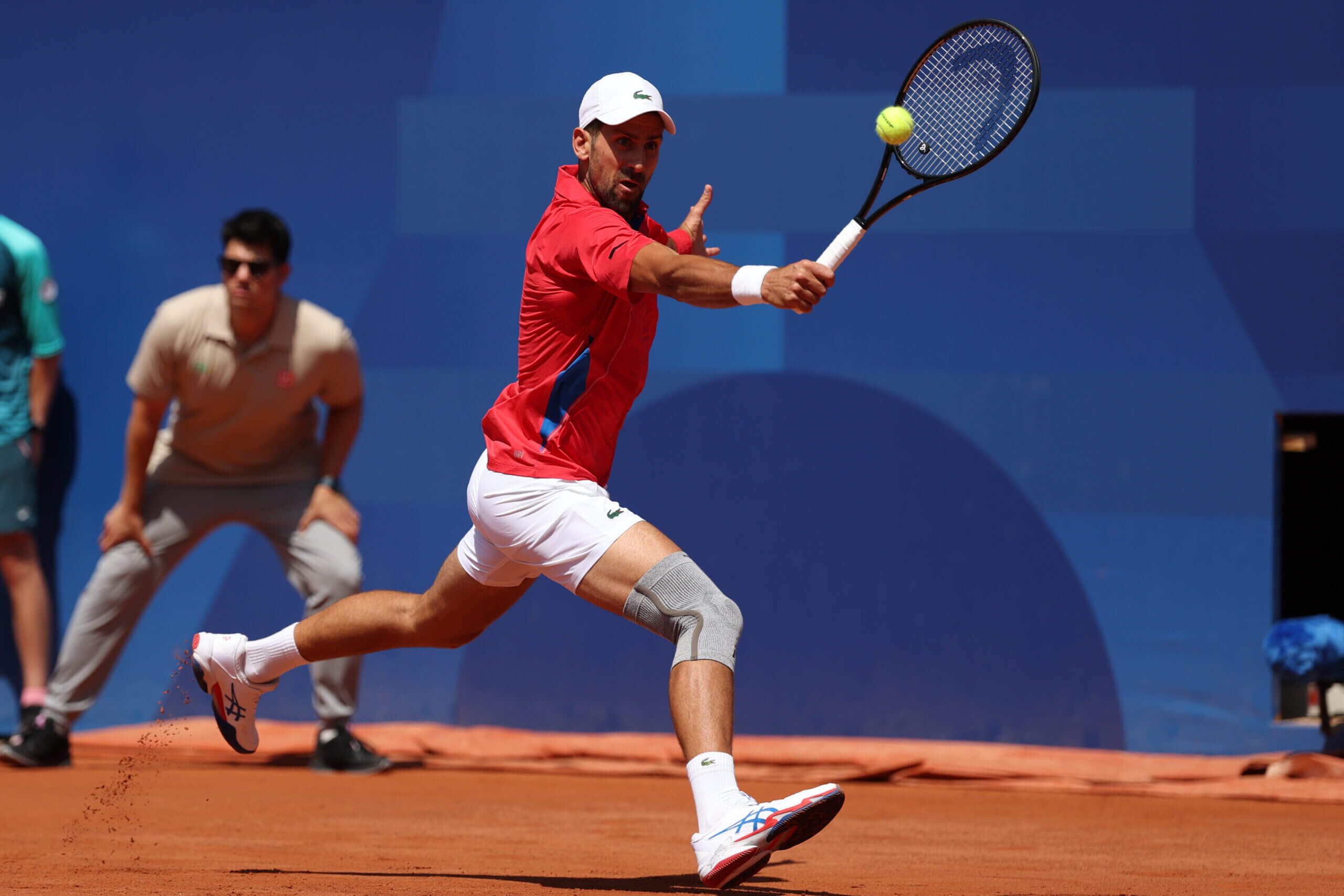
Djokovic was able to manoeuvre Nadal all over Court Philippe-Chatrier (Juanjo Martin/Sipa USA)
Nadal’s first-round opponent Marton Fucsovics had also tried the tactic, a pretty obvious one against a 38-year-old battling injuries, but Djokovic’s drop shot is in a different league to that of the Hungarian. In the Wimbledon final earlier this month, Djokovic had suffered at the hands of Carlos Alcaraz with the same shot. This time around, he relished being the man handing out the punishment rather than receiving it, even using it to restore order and go up 5-4 in the second set after Nadal made the match more competitive.
Charlie Eccleshare
Two years summed up in one point
The biggest problem for Nadal during this latest, and perhaps, last comeback, has been his vulnerability on his serve. Initially, it was the weakest part of his game but he worked hard to turn it into a weapon, learning how to torque his body to maximize his power and gaining the kind of pinpoint placement that made so many of his next shots even more deadly.
The injuries to the middle of his body and his back the past two years have contributed to a major decline, and against the best returner in the history of the sport, that figured to be a problem.
The warning sign that this could be an ugly afternoon for Nadal occurred in the very first game. With Nadal facing break point, he nailed a 115mph serve, one of his hardest of the day down the middle of the court. Against a lot of players, the ball doesn’t come back.
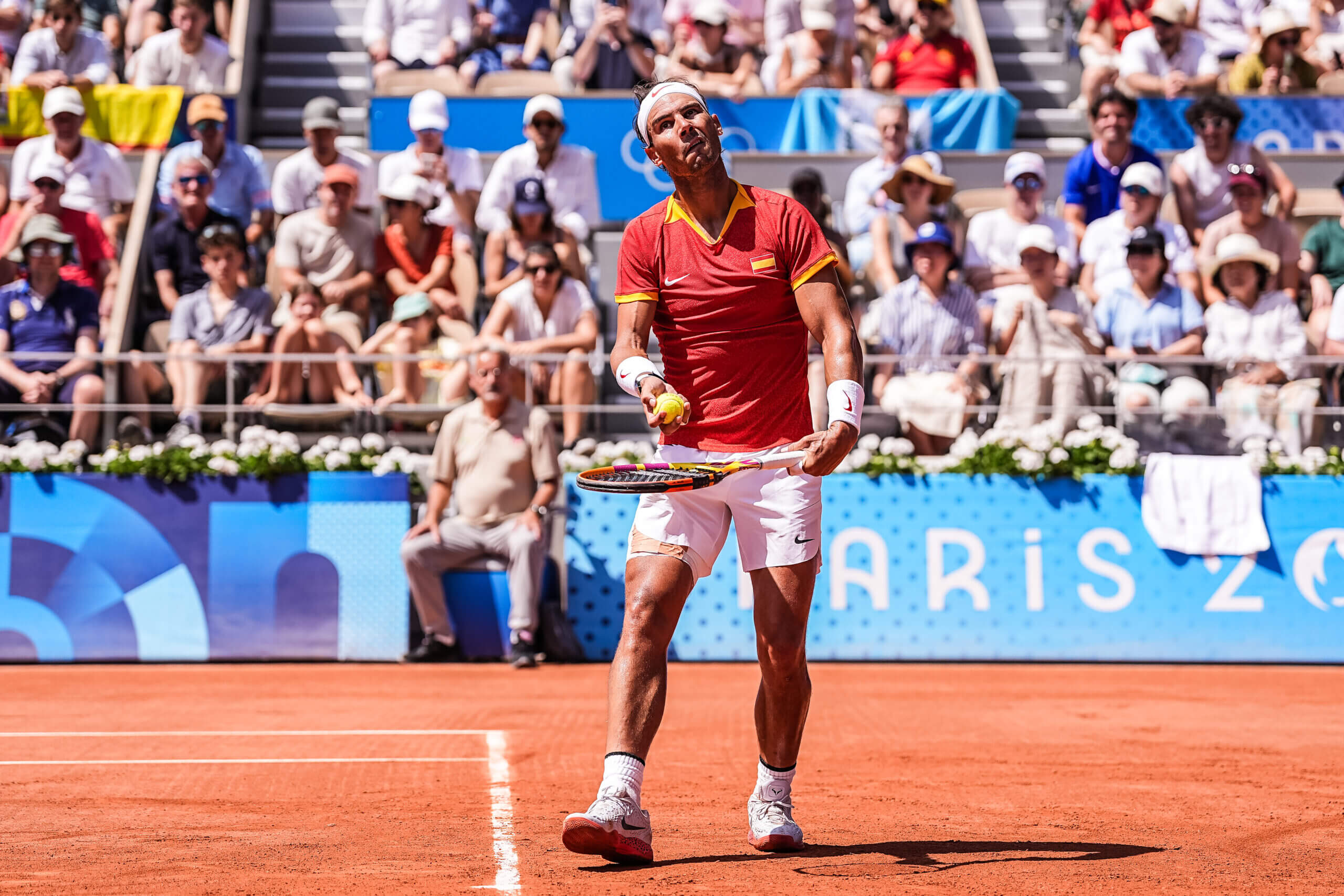
Nadal’s serve could not trouble Djokovic’s prestigious returning (Jari Pestelacci/Eurasia Sport Images via Getty Images)
Djokovic stretched for it and stabbed a forehand at Nadal’s feet. Nadal missed his forehand wide after it ticked the net, and Djokovic had the advantage he would never come close to giving up. It was a microcosm of Nadal’s afternoon. Too many soft serves, so many difficult returns, and so many errors on balls he didn’t have time to set up for.
Matt Futterman
How did Nadal go on that four-game run?
With Djokovic leading 6-1, 4-0, the main hope for Nadal was that he could avoid losing a bagel set to the Serbian for the first time in his career.
He managed to do that by holding serve for 4-1, and everyone on Chatrier breathed a huge sigh of relief.
Then things got a little weird. Djokovic, so solid throughout, threw in a horrible game and double-faulted when down break point to reduce the deficit to 4-2.
A minor aberration perhaps, but then at 4-3, suddenly Djokovic had to deal with scoreboard pressure for the first time in the match. Not just scoreboard pressure against anyone, but against the best clay-court player of all time and his greatest rival.
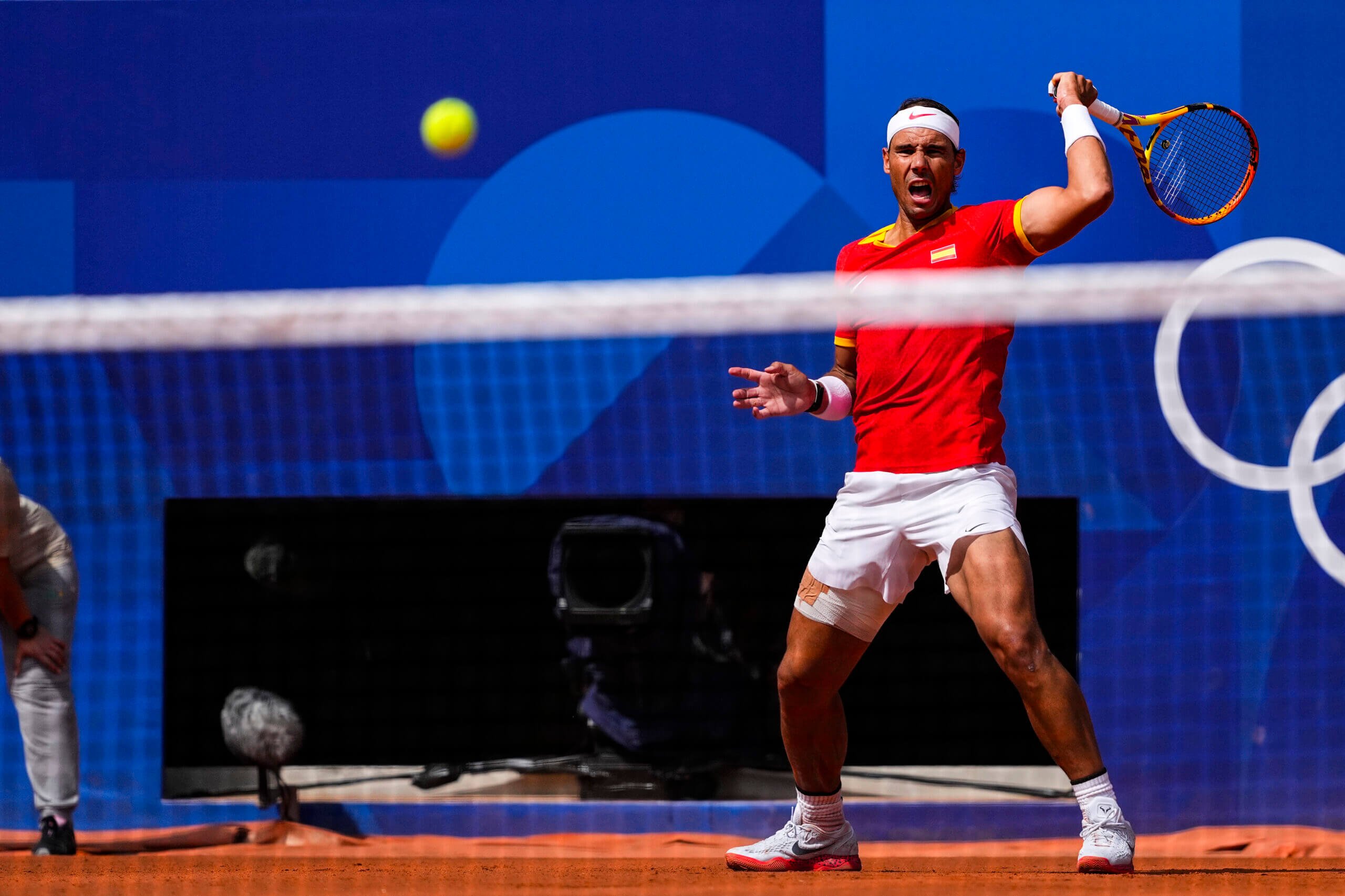
Nadal recovered his form for part of the second set, but it wasn’t enough (Getty Images)
Suddenly it was Nadal who was using the drop shot to take away Djokovic’s legs rather than the other way around, and it was the Serbian missing routine shots. The tension in Djokovic was most painfully obvious when he made a mess of a smash that set Nadal up for an easy forehand to break for 4-4 — a shot that has haunted him on numerous occasions.
What on earth had just happened? Nadal raised his level for sure but on a sweaty Parisian day, this really felt like a rare case of Djokovic feeling the heat. And sure enough, the spell was broken in the next game when Djokovic broke to lead 5-4. He then served out the match the game after, and those desperate for this match to have turned into a contest were left wondering what might have been.
Charlie Eccleshare
One of tennis’s great courts, but not its greatest occasion
Court Philippe-Chatrier had all the feel of a massive occasion.
Blue skies. Hot sun. A standing-room-only crowd.
Nadal and Djokovic battling on the court.
What unfolded was something far more typical of Djokovic’s second-round matchups, not just because of the lopsided scoreline but because of how he overwhelmed his opponent. The same things that so often happen to these unlucky souls also happened to Nadal on Monday afternoon.
Djokovic defanged Nadal’s serve, sending him backpedalling instead of moving into the court.
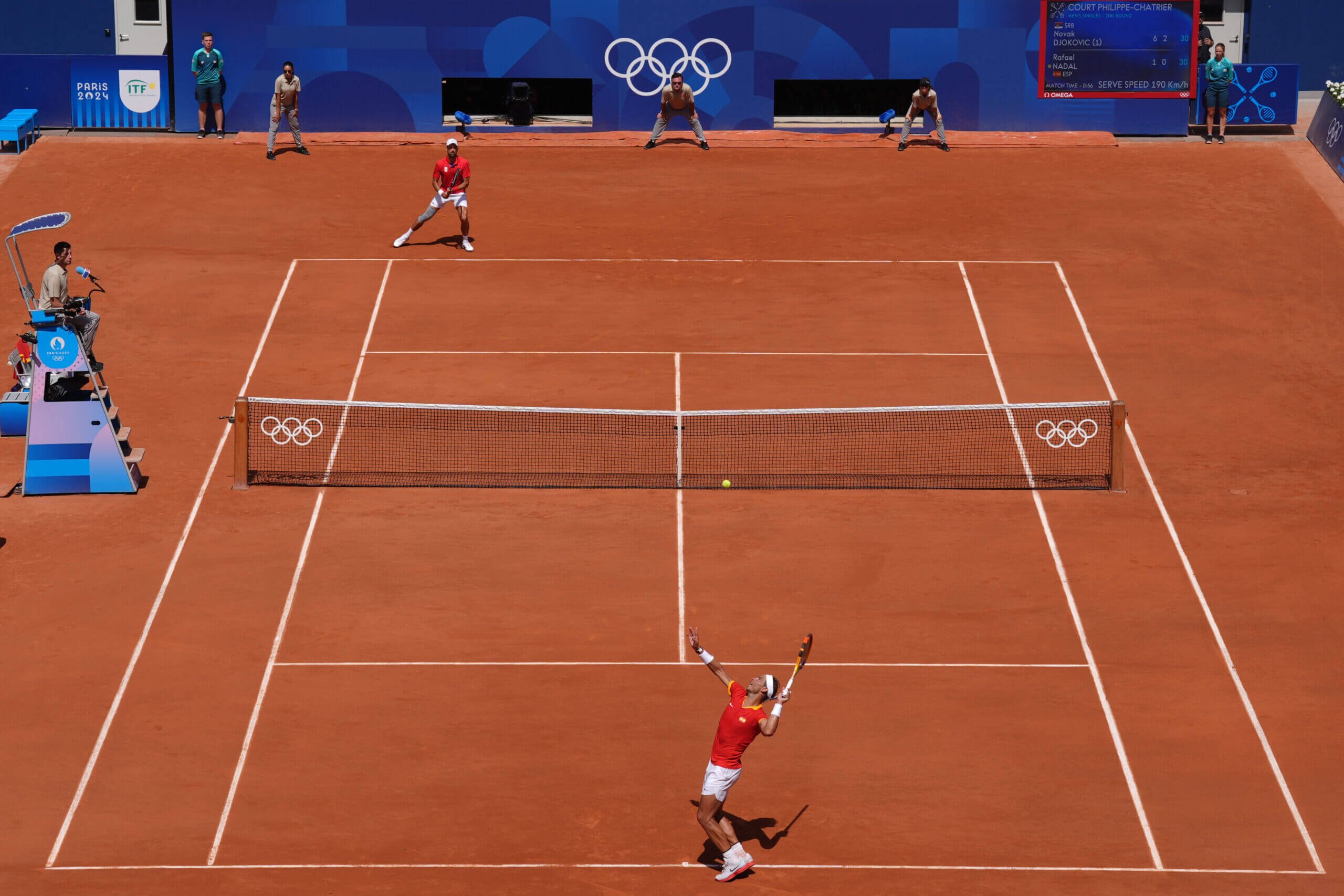
Court Philippe-Chatrier has been the scene of the duo’s greatest matches (Picture Alliance via Getty Images)
He made him play extra ball after extra ball, until Nadal was doing what all the other poor souls do — trying to hit the perfect shot from a position on the court where that is a nearly impossible task. Nadal swung wildly from several feet behind the baseline all afternoon. He tried to smack winners from outside the sideline. In a typical match, he might be good for a few of those but not many, even when at his best.
Djokovic meanwhile served and pushed forward, getting easy shots on balls around the service line off survival shots. He minimized his mistakes, mostly because his opponent didn’t force him to hit too many shots from spots on the court where mistakes happen.
All of that added up to a great spectacle, but aside from some stunning points and the late flourish from Nadal down 4-1 in the second, not much of a tennis match. That’s about what happens for Djokovic in his second rounds.
Matt Futterman
Where does this leave Nadal for the doubles?
Given how off the pace Nadal looked for much of this match, it would be understandable to worry about his chances of doing much in the doubles with Carlos Alcaraz.
Doubles though is a very different beast to taking on the mighty Djokovic in singles, and assuming he hasn’t suffered a fresh injury, Nadal should still be competitive alongside the Wimbledon and French Open champion.
As Andy Murray showed on Sunday night, it’s possible to be a way off competing in singles but still able to make a fist of it in doubles. Nadal is in much better shape physically than Murray, so will be hopeful he can lift himself to have some joy — and that will be the hope of the wider tennis world too, desperate to see Nadal make a few more memories at the venue which he has so dominated over the last two decades.
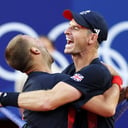
GO DEEPER
How Andy Murray survived five match points – and saved his tennis career – in Paris
Charlie Eccleshare
What did Rafael Nadal say after the match?
We’ll bring you his quotes after media duties.
What did Novak Djokovic say after the match?
“I got maybe a little too comfortable there, played too sloppy a service game.
“You can’t give any chances to Nadal, he’s going to use them — he’s going to come back — especially on this court.”
“I think there was a lot of interest directed on our match today, on the tennis court… It’s unfortunate for him he wasn’t at his best, but I did everything I possibly could to make him uncomfortable.”
Recommended reading
(Top photo: Andrzej Iwanczuk / NurPhoto via Getty Images)

